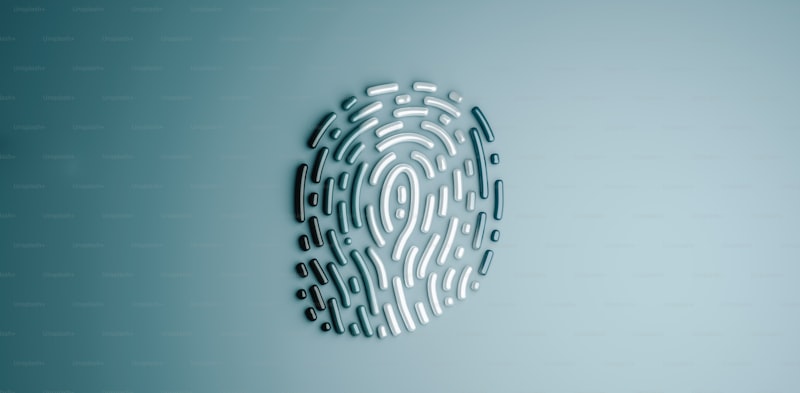Digital identity verification refers to the process of confirming a person’s identity electronically, often through biometrics, documents, or other digital means. This method offers speed and convenience, making it ideal for today’s fast-paced world. No more standing in line at the DMV or waiting weeks for paperwork to process. With digital verification, it can happen almost instantly.
One of the most exciting aspects of this technology is its potential to enhance security. Traditional methods like passwords or ID cards can be lost, stolen, or forged. Digital verification methods, however, rely on advanced encryption and biometric data that are much harder to replicate or steal. This not only protects individuals from identity theft but also helps businesses and governments safeguard sensitive information.
Moreover, digital identity verification is poised to revolutionize industries ranging from finance to healthcare. Imagine applying for a loan and having your identity verified in seconds, or accessing your medical records securely from anywhere in the world. These are just a few examples of how digital verification is streamlining processes and improving efficiency across sectors.
But what does this mean for privacy? Critics argue that increased reliance on digital identities could pose risks to personal privacy if not properly managed. Issues like data breaches or unauthorized access to personal information are concerns that need to be addressed as digital verification becomes more widespread.
Overall, the future of digital identity verification is bright with potential. As technology continues to evolve, so too will the way we verify our identities. It’s a step towards a more connected and efficient world, where proving who you are is as simple as a fingerprint or facial scan.
Revolutionizing Security: How AI is Redefining Digital Identity Verification
Imagine a world where verifying your identity online is not only secure but also seamless. AI is making this a reality by leveraging advanced algorithms to detect patterns and anomalies that humans might overlook. This isn’t just about entering a password anymore; it’s about biometric scans, behavioral analysis, and real-time monitoring working together like a digital guardian angel.
Traditional methods of identity verification, like passwords and security questions, are proving to be insufficient against sophisticated cyber threats. AI steps in with its ability to analyze vast amounts of data at lightning speed, learning from each interaction to enhance accuracy and security continuously. It’s like having a super-intelligent bouncer at the door of your digital life, scrutinizing every attempt to ensure only authorized individuals gain access.
But how does AI do it? Picture a detective solving a complex case. AI algorithms scrutinize user interactions, comparing them against established patterns of normal behavior. Just as a detective spots anomalies in a crime scene, AI identifies suspicious activities—like an unusual login location or atypical transaction patterns—prompting further verification steps or flagging potential threats in real-time.

Moreover, AI doesn’t stop evolving. Like a child learning from experiences, AI systems refine their methods over time, becoming smarter and more adept at distinguishing between legitimate users and malicious actors. This adaptability is crucial in the ever-changing landscape of cybersecurity, where new threats emerge daily.
In essence, AI is redefining digital identity verification by not only enhancing security measures but also by streamlining the user experience. It’s like upgrading from a basic lock and key to a sophisticated security system that not only protects but also anticipates potential breaches.
As we continue to embrace AI’s capabilities, the future of digital identity verification looks promising. With AI-powered solutions paving the way, we can navigate our digital lives with confidence, knowing that our identities are protected by the forefront of technological innovation.
Blockchain and Biometrics: The Next Generation of Secure Identity Verification
Blockchain, famous for powering cryptocurrencies like Bitcoin, is a decentralized ledger system. It records transactions across computers so that the data is secure, transparent, and immutable. Biometrics, on the other hand, uses unique physical traits such as fingerprints, iris patterns, or facial recognition to confirm identities. Together, they create a robust system where your identity is not only verified but also protected with the highest level of security.
Picture this: instead of remembering countless passwords or carrying multiple IDs, you can access your accounts or confirm your identity with just a touch or a glance. This seamless experience not only enhances security but also simplifies our daily interactions, whether it’s accessing financial services, traveling, or even voting.
The beauty of this technology lies in its ability to thwart fraud and identity theft. With biometric data stored on a blockchain, the risk of unauthorized access or manipulation is significantly reduced. Each transaction or verification request is recorded across multiple nodes in the blockchain network, making it nearly impossible to alter without detection.
But how does it work in practice? Let’s say you want to access your bank account. Instead of entering a password, you use your fingerprint or face scan. This biometric data is then encrypted and stored on the blockchain. When you initiate a transaction, the blockchain verifies your biometrics against the stored data, ensuring that only you can access your account.
The potential applications are vast and transformative. From enhancing cybersecurity in financial institutions to securing sensitive medical records, blockchain and biometrics offer a future where trust and convenience go hand in hand. As this technology continues to evolve, so too will our ability to safeguard identities in an increasingly digital world.
From Passwords to Patterns: Innovations Shaping Digital Identity Authentication

In today’s digital landscape, the evolution from passwords to more sophisticated methods like patterns signifies a pivotal shift. These innovations are revolutionizing how we safeguard our online presence. No more forgetting complex strings of characters or resetting passwords repeatedly. Instead, think of unlocking your devices or logging into your favorite apps with a simple swipe or tap—easy as drawing a pattern on your screen.
Patterns as a form of authentication offer a blend of security and user-friendliness. They are akin to creating a unique signature that only you know, making it significantly harder for unauthorized access. This method not only enhances security but also enhances the user experience by reducing friction in daily interactions with technology.
Moreover, biometric authentication adds another layer of innovation. From fingerprint scanners to facial recognition, these technologies are transforming how we verify identities. They provide a level of security that goes beyond what traditional passwords can offer. Imagine your device recognizing you instantly based on your unique biometric markers—truly futuristic yet increasingly commonplace.
Furthermore, innovations in behavioral biometrics are gaining traction. This involves analyzing how users interact with devices—such as typing patterns or mouse movements—to authenticate identities. It’s like having a digital fingerprint that evolves with your behaviors, ensuring continuous and adaptive security.
Zero-Knowledge Proofs: The Key to Privacy in Digital Identity Verification?
Imagine this: you need to prove you are over 18 to access a restricted website without revealing your exact birthdate. Zero-knowledge proofs allow you to do just that. They enable verification of information without disclosing the actual data itself. It’s like proving you have a key to a locked room without showing the key or how it works.
Zero-knowledge proofs work by allowing one party, the prover, to demonstrate knowledge of a secret value or fact to another party, the verifier, without revealing any details about that value. This ensures that personal data remains confidential and secure, reducing the risk of identity theft and unauthorized access.
But how does it really work? Let’s break it down with a simple analogy. Imagine you’re meeting someone who claims they can solve a complex puzzle. To prove their skills, they ask you to create a puzzle with specific pieces missing. If they can complete the puzzle without seeing the missing pieces, they’ve proven their ability without knowing the exact details of your puzzle design. That’s essentially how zero-knowledge proofs operate—they validate information without exposing sensitive data.
The applications of zero-knowledge proofs extend far beyond age verification. They can be used in financial transactions, healthcare records, voting systems, and more, where privacy and security are paramount. By leveraging cryptographic protocols, zero-knowledge proofs ensure that only the necessary information is revealed for validation, maintaining anonymity and confidentiality.
Zero-knowledge proofs hold immense promise as the cornerstone of privacy in digital identity verification. As technology continues to advance, integrating these robust security measures will be crucial in safeguarding personal information online. So, the next time you think about how to protect your digital identity, consider the power of zero-knowledge proofs—it might just be the key to a safer digital future.
Frequently Asked Questions
What are the key trends shaping the future of digital identity verification?
Explore the evolving trends influencing digital identity verification. Discover how advancements in biometrics, AI, blockchain, and regulatory frameworks are enhancing security and usability.
What are the privacy implications of advanced digital identity verification systems?
Learn about the privacy implications of advanced digital identity verification systems, including potential risks to personal data security and ways to safeguard privacy.
How can AI and machine learning enhance digital identity verification?
Learn how AI and machine learning improve digital identity verification by automating checks, detecting fraud patterns, and enhancing accuracy through advanced algorithms.
What role will blockchain technology play in securing digital identities?
Learn how blockchain technology enhances security by providing decentralized and tamper-proof digital identities, ensuring data integrity and reducing identity fraud risks.
How will biometrics influence digital identity verification methods?
Learn how biometrics revolutionize digital identity verification, enhancing security with unique physical traits like fingerprints and facial features, ensuring more reliable authentication.


